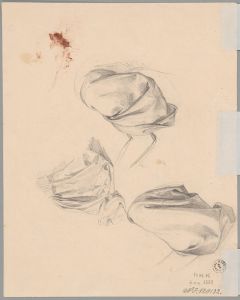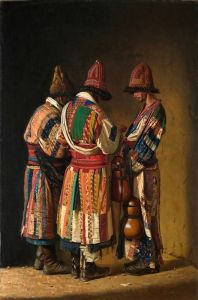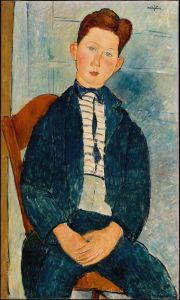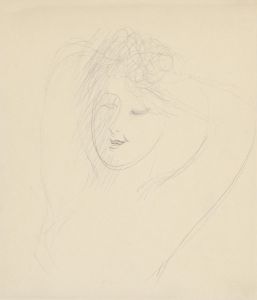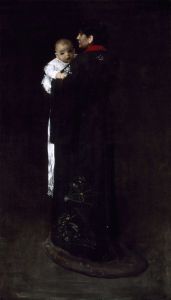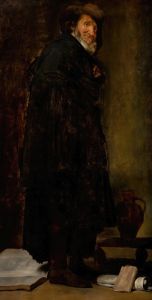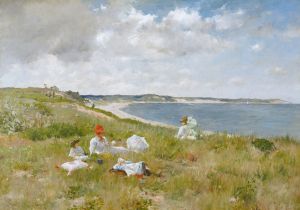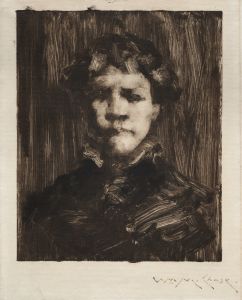
The Blue Kimono
A hand-painted replica of William Merritt Chase’s masterpiece The Blue Kimono, meticulously crafted by professional artists to capture the true essence of the original. Each piece is created with museum-quality canvas and rare mineral pigments, carefully painted by experienced artists with delicate brushstrokes and rich, layered colors to perfectly recreate the texture of the original artwork. Unlike machine-printed reproductions, this hand-painted version brings the painting to life, infused with the artist’s emotions and skill in every stroke. Whether for personal collection or home decoration, it instantly elevates the artistic atmosphere of any space.
"The Blue Kimono" is an oil painting by the American artist William Merritt Chase, created in 1898. Chase was a prominent figure in American art, known for his contributions to the Impressionist movement and his role as an influential teacher. He was a master of both portraiture and landscape painting, and his work often reflects a keen interest in capturing the effects of light and color.
This particular painting, "The Blue Kimono," is part of Chase's series of works that explore the theme of women in interiors, a subject he frequently revisited throughout his career. The painting depicts a woman dressed in a blue kimono, seated in a domestic setting. The kimono, a traditional Japanese garment, suggests Chase's interest in the exotic and the influence of Japonism, a trend that swept through Europe and America in the late 19th century, characterized by the incorporation of Japanese aesthetics into Western art.
In "The Blue Kimono," Chase demonstrates his skillful use of color and light. The blue of the kimono is rendered in rich, vibrant tones, contrasting with the softer hues of the background. The play of light across the fabric and the woman's face highlights Chase's ability to capture the subtleties of texture and form. The composition is carefully balanced, with the figure positioned slightly off-center, creating a sense of intimacy and immediacy.
Chase's choice of a kimono as the subject's attire reflects the broader cultural fascination with Japan during this period. The late 19th century saw a surge of interest in Japanese art and design, following the opening of Japan to the West. This fascination was evident in various art forms, including painting, where artists like Chase incorporated Japanese elements into their work. The kimono in this painting serves as a symbol of this cross-cultural exchange and the blending of Eastern and Western artistic traditions.
The model in "The Blue Kimono" is believed to be one of Chase's frequent sitters, though her exact identity is not definitively known. Chase often used family members, friends, and students as models for his portraits, capturing them in informal, everyday settings. This approach allowed him to explore the nuances of personality and character, as well as the interplay between the figure and their environment.
"The Blue Kimono" is housed in the Brooklyn Museum, where it remains an important part of their American art collection. The painting is celebrated for its technical excellence and its representation of Chase's artistic interests during this period. It exemplifies his ability to merge traditional portraiture with modern sensibilities, creating works that are both timeless and reflective of their era.
Overall, "The Blue Kimono" is a testament to William Merritt Chase's skill as a painter and his contribution to the development of American Impressionism. Through his use of color, light, and composition, Chase captures a moment of quiet elegance, inviting viewers to appreciate the beauty and complexity of his subject.





